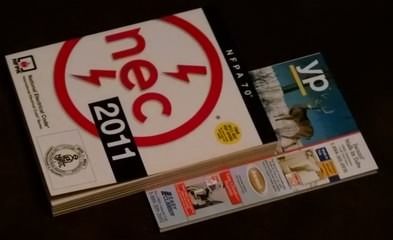Sure. The NEC has many provisions for minimum compliance. But what if someone wants to exceed the minimum requirement with non-conforming practices?
Let's take a common one that has been discussed on this Forum in the past. Section 210.52(F) states at least one receptacle outlet shall be installed in areas designated for the installation of laundry equipment. Section 210.11(C)(2) states this one required receptacle shall be supplied by a 20-ampere branch circuit. So to comply with the code, I install a single receptacle in the laundry room and supply it with a 20A branch circuit. I have met the code.
Nowhere in the code does it say I can't install as many other branch circuits or receptacles in that room as I want once the minimum requirement has been met.. So, does this mean the code permits additional receptacles to be installed in the laundry room and supplied from perhaps a 15A branch circuit that also supplies other outlets not in the laundry room?
If the NEC is 100% permissive, it would have to prohibit everything not intended by a minimum code requirement. If the NEC is 100% prohibitive, it would have to give permission for every possible scenario. Shouldn't we consider this on a case-by-case basis?
That is, there are a few instances where the code intends something to not be permitted even though it is not explicitly expressed as such?


